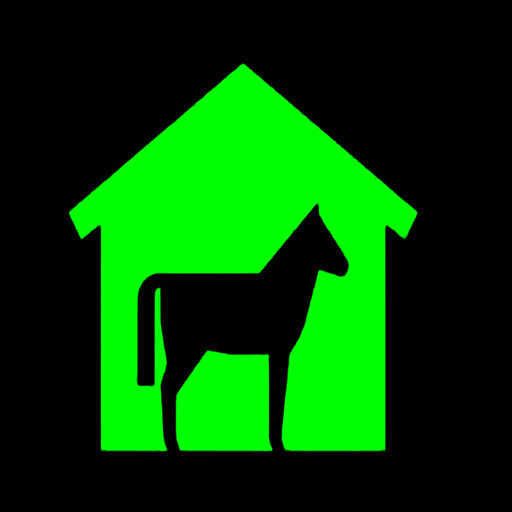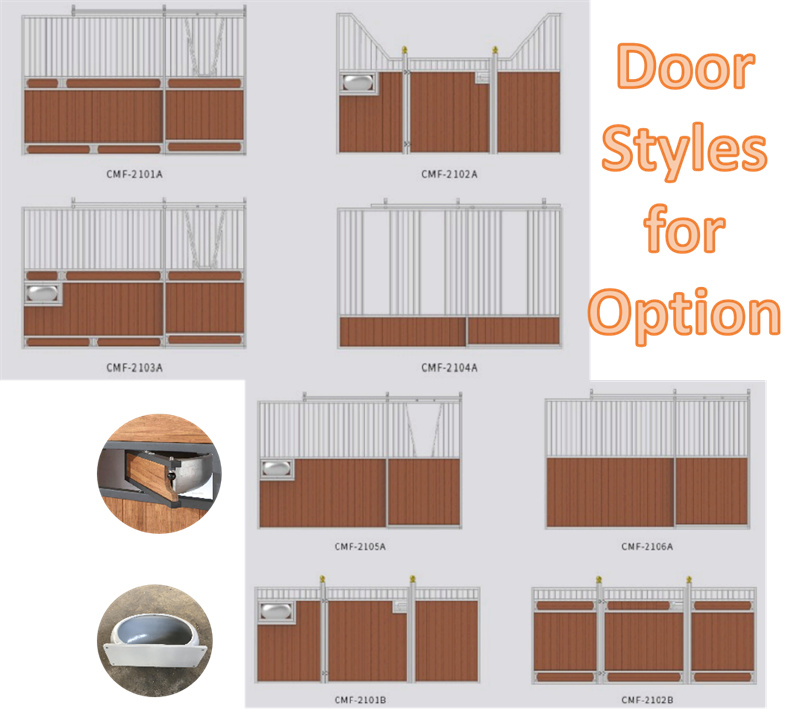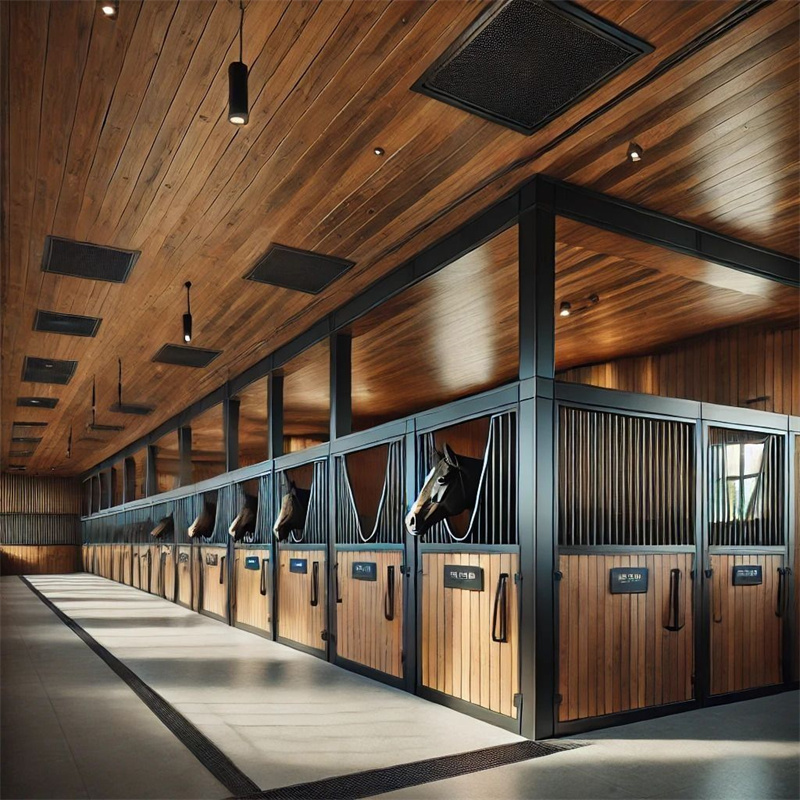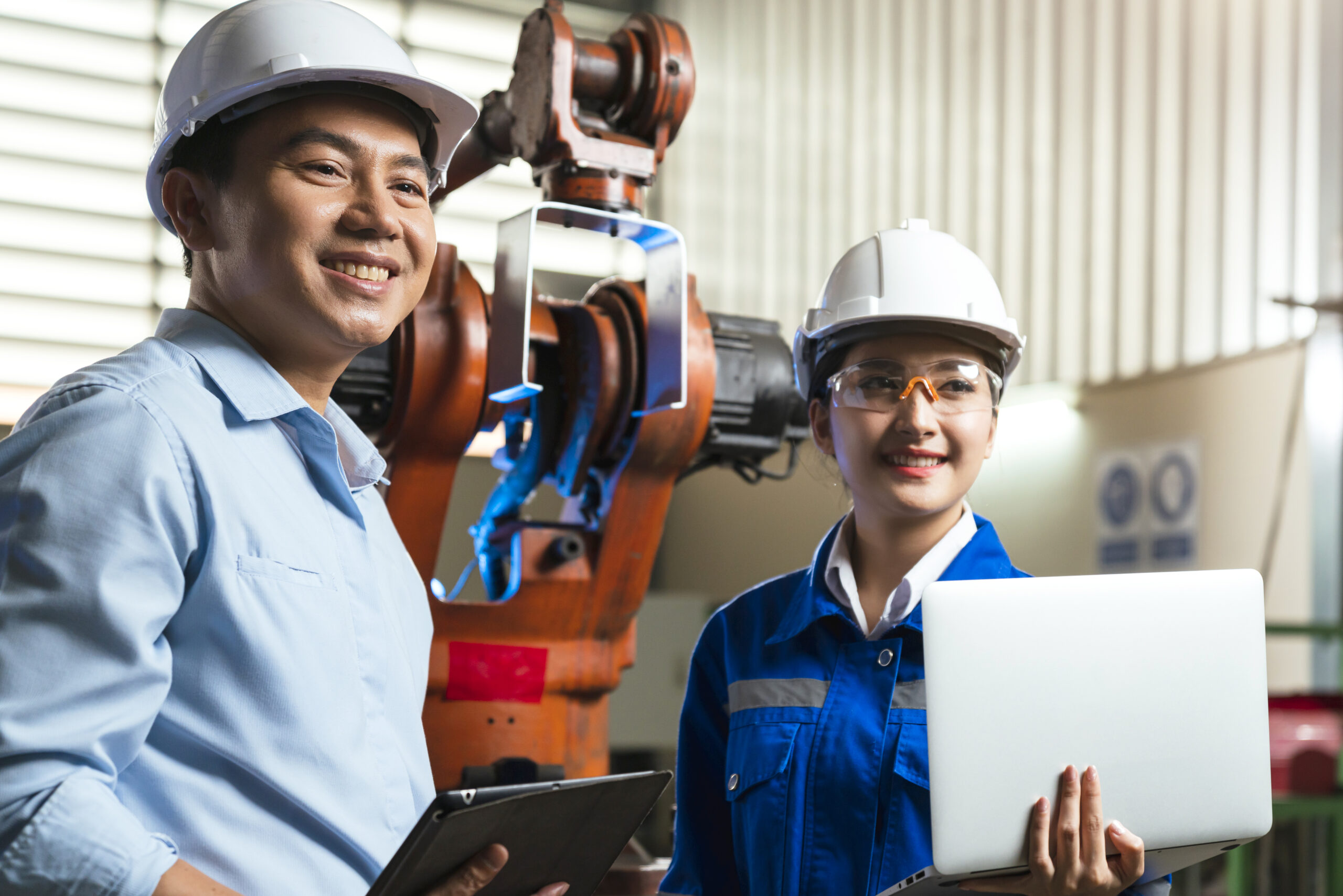
Have you ever considered how the right design and material can transform a horse stable into a safe and efficient haven for your equine companions? I’m Frank Zhang, founder of DB Stable, and over the past 15 years I’ve witnessed firsthand how tailored stable solutions—whether traditional barns or modern, customizable designs—can elevate equestrian care. At DB Stable, our commitment to quality and innovation drives us to explore every facet of stable construction, from the durability of timber and metal to the aesthetics of custom-built equestrian stables.
In this article, I’ll share insights into the diverse types of horse stables available, breaking down the pros and cons of various materials and design options so you can make an informed decision that suits your specific needs. Whether you’re a horse owner or part of an equestrian center, join me as we delve into the key factors that guarantee both functionality and style in your next horse stable project.
Overview and Importance of Horse Stables: 7 Essential Benefits for Equine Health
As someone who has spent years working with horses, I’ve come to appreciate that horse stables are much more than simple shelters. They represent the foundation of proper equine care and management. Quality stables provide crucial protection from harsh weather conditions while creating a secure environment where horses can thrive physically and mentally.
Definition and Evolution of Horse Stables
Horse stables have transformed dramatically throughout history, evolving from basic shelters to sophisticated structures designed with equine welfare as the priority. Ancient civilizations used rudimentary stables for horses that offered minimal protection, while today’s modern facilities incorporate scientific understanding of equine behavior and physiology.
The earliest horse barns date back to ancient Mesopotamia and Egypt, where horses were highly valued for transportation and warfare. These structures have evolved through centuries of refinement to become the specialized equestrian facilities we see today, complete with proper ventilation, feeding systems, and individual stalls designed for comfort.
Historical Progression of Stable Design
Traditional timber barns with limited ventilation have given way to modern structures that prioritize air quality and temperature control. According to research from University of Minnesota’s Stable Management guidelines, proper ventilation is now considered essential for preventing respiratory issues in horses.
The evolution continues today with modular and portable horse stable options that offer flexibility for growing equestrian operations. These adaptable solutions address the common question of what type of horse stable is best for my property by providing customizable options.
Significance of Stable Quality in Equestrian Care
The quality of a horse’s stable directly impacts its overall health, comfort, and performance. High-quality horse stables provide appropriate space for movement, proper ventilation to prevent respiratory ailments, and suitable flooring to support hoof health. These factors collectively contribute to the horse’s physical wellbeing and psychological comfort.
Research published by Penn State Extension on Horse Barn Design indicates that properly designed stables can significantly reduce stress-related behaviors and health issues in horses. The design should account for the natural behaviors and needs of horses as prey animals that require vigilance and security.
Impact on Horse Health and Wellbeing
| Stable Feature | Health Impact | Performance Impact |
|---|---|---|
| Proper Ventilation | Reduced respiratory issues | Improved stamina and endurance |
| Adequate Space | Lower stress levels | Better recovery between training |
| Quality Flooring | Improved hoof health | Enhanced movement and gait |
| Natural Light | Better vitamin D synthesis | Regulated sleep-wake cycles |
| Temperature Control | Fewer heat/cold-related issues | Consistent training conditions |
When I consult with clients about what type of horse stable is best for their property, I emphasize that quality design isn’t merely an aesthetic choice—it’s a critical investment in their horses’ health and performance potential.
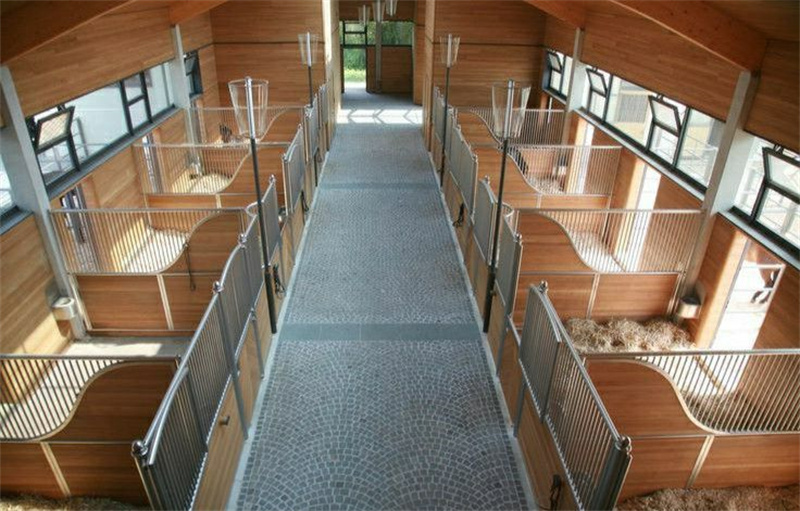
Key Functions and Benefits of Modern Horse Stables
Today’s horse barns serve multiple essential functions beyond basic shelter. They provide controlled environments for feeding, grooming, veterinary care, and training. Modern stable solutions also incorporate features that facilitate efficient management and daily care routines.
“A well-designed stable improves horse comfort by ensuring proper airflow and space usage, reduces stress, and supports better performance through safe and thoughtful design choices.”
Advanced stables for horses now include specialized areas for washing, treatment, and controlled exercise. Many commercial operations and private owners are investing in luxury stall fronts and custom features that enhance both functionality and aesthetics.
Economic Benefits for Equestrian Operations
Beyond horse welfare, quality stables offer significant economic advantages. Well-designed facilities improve operational efficiency, reduce maintenance costs, and enhance property value. For commercial operations, attractive and functional horse stables can become a key selling point that attracts clients and commands premium boarding rates.
When evaluating what type of horse stable is best for my property, I consider not just the initial investment, but the long-term value. Durable materials and thoughtful design may have higher upfront costs but provide substantial savings through reduced maintenance and enhanced longevity, as noted in research from Ohio State University’s Stable Management guidelines.
Exploring Different Types of Horse Stables: 8 Innovative Designs for Modern Equestrians
When it comes to housing our equine companions, the options have expanded dramatically in recent years. Horse stables now range from traditional wooden barns to cutting-edge modular designs. As someone who’s worked with numerous stable configurations, I’ve seen firsthand how the right facility can significantly impact horse health, management efficiency, and overall operation costs.
Traditional vs. Modern Horse Stable Designs
Traditional horse stables typically feature timber construction with classic aesthetics that have stood the test of time. These structures often include center-aisle designs with stalls along both sides, providing a familiar and comforting environment for horses. The natural insulation properties of wood help maintain stable temperatures year-round.
Modern equestrian stables, by contrast, incorporate innovative materials like galvanized steel, HDPE (high-density polyethylene), and advanced composites. According to Penn State Extension’s Horse Barn Design Guidelines, these contemporary materials often offer superior durability, fire resistance, and ease of cleaning while requiring significantly less maintenance.
Benefits of Contemporary Stable Innovations
Today’s advanced stable designs prioritize ventilation, natural light, and ergonomic layouts that improve both horse welfare and handler safety. Modern materials create facilities that resist pests, moisture damage, and daily wear, leading to longer service life and reduced long-term costs despite higher initial investments.
| Stable Type | Best For | Key Advantages | Considerations |
|---|---|---|---|
| Traditional Timber Barn | Private owners, aesthetic preference | Natural insulation, classic appearance | Higher maintenance, fire risk |
| Metal Frame Stables | Commercial operations | Durability, pest resistance | Temperature regulation challenges |
| Portable Modular Units | Flexibility needs, expanding operations | Relocatable, expandable | Less permanent, weather considerations |
| European-Style Block Design | Show facilities, breeding operations | Efficiency, disease control | Higher initial investment |
| Hybrid Systems | Multi-purpose facilities | Combines advantages of multiple types | Complex design requirements |
| American-Style Shed Row | Warmer climates, training facilities | Excellent ventilation, lower cost | Limited protection in harsh weather |
| Mare-Foal Specialized Units | Breeding operations | Larger spaces, safety features | Specialized design needs |
| Therapeutic Stables | Rehabilitation centers | Accessible design, monitoring capabilities | Higher cost per unit |
Portable vs. Permanent Horse Stables
The decision between portable and permanent structures represents one of the most significant choices in equestrian facility planning. Portable stables offer remarkable flexibility, allowing reconfiguration as needs change or relocation if you move properties.
Modern portable units feature innovations like high-quality galvanized frames, impact-resistant panels, and integrated roofing systems that rival permanent structures in durability. These customizable horse stables options provide solutions for everything from temporary event housing to permanent but modifiable facilities.
“Different materials such as timber, metal, and wood offer varied durability, insulation, and maintenance needs, allowing horse owners to choose the best option based on climate, budget, and aesthetic preferences.”
Permanent structures, while less flexible, typically offer superior insulation, security, and integration with other facility components like indoor arenas or office spaces. The investment in a permanent structure often pays dividends through energy efficiency and structural longevity.
Specialized Equestrian Stables for Different Equine Requirements
Beyond the basic classifications, horse stables can be specialized for particular equine needs. Breeding operations benefit from larger foaling stalls with monitoring systems and safe mare-foal separation options. Competition yards require wash stalls, secure tack storage, and efficient feed room designs.
Research from University of Minnesota’s Stable Management resources emphasizes that specialized equestrian stables should be designed with specific horse activities in mind. For example, race training facilities need different layouts than therapeutic riding centers or pleasure horse barns.
Customization Options for Modern Horse Facilities
Today’s customizable horse stables options include a wide range of features from specialized flooring materials to integrated feeding systems. Modern design allows for adaptable spaces that can evolve with changing needs, incorporating technology for climate control, security, and horse monitoring.
When evaluating different stable types, focus on your specific requirements rather than industry trends. The ideal solution balances horse welfare, handler convenience, budget constraints, and future growth potential in a package that works for your unique situation.
Material Choices and Construction Options for Horse Stables: 7 Essential Comparison Factors
When it comes to building horse stables, material selection is far more than an aesthetic decision—it directly impacts durability, maintenance requirements, animal health, and your long-term investment. Having designed and maintained numerous equestrian facilities over the years, I’ve experienced firsthand how these choices significantly affect both horse welfare and owner satisfaction.
Wood vs. Metal vs. Timber Horse Stables: Pros and Cons
The eternal debate between timber stables and metal stables continues to challenge horse owners worldwide. Traditional timber stables offer natural insulation properties that help regulate temperature—keeping interiors cooler in summer and warmer in winter—which can be particularly beneficial for horses sensitive to temperature fluctuations.
Modern metal stables, particularly those using galvanized steel, offer superior durability and typically require significantly less maintenance over their lifespan. According to Penn State Extension’s horse barn design guidelines, metal structures can withstand harsh weather conditions while resisting common issues like rot, termites, and fire.
Key Characteristics of Timber Horse Stables
When evaluating timber stables, it’s important to consider both treated and untreated options. Treated timber offers enhanced durability and resistance to moisture and pests, though at a higher initial cost. The natural aesthetic of wood creates a traditional, visually appealing environment that many stable owners prefer for its classic charm.
One significant advantage of timber is its workability—modifications and repairs can often be completed with basic tools and moderate skills. However, this material requires regular maintenance including treatment against moisture, fungi, and insects, especially in humid climates.
Advantages of Metal Horse Stables
| Material | Initial Cost | Lifespan | Maintenance Requirements | Insulation Properties | Environmental Impact |
|---|---|---|---|---|---|
| Treated Timber | Moderate | 15-30 years | High (annual treatments) | Excellent (natural) | Moderate (treatment chemicals) |
| Galvanized Steel | High | 30-50+ years | Low (periodic inspection) | Poor (requires additional insulation) | Low (recyclable) |
| HDPE Plastic | High | 20-30 years | Very Low (washable) | Moderate | Moderate (petroleum-based) |
| Concrete Block | Very High | 50+ years | Very Low | Poor (cold, requires insulation) | High (production emissions) |
| Hybrid (Steel/Wood) | High | 30-40 years | Moderate | Good (combines benefits) | Moderate |
Metal stables constructed with galvanized steel or aluminum frames offer exceptional durability against the elements. Many professional facilities choose powder-coated metal components for additional corrosion resistance, especially in areas with high humidity or salt exposure.
The modern metal structure significantly outperforms timber in fire resistance—a critical safety consideration for any horse facility. While metal does require a higher initial investment, the long-term cost analysis often reveals significant savings due to reduced maintenance and extended lifespan.
Durability, Maintenance, and Cost Considerations for Horse Stables
When determining how to choose the right horse stable design, long-term economics should guide your decision alongside initial construction costs. A comprehensive stable solution might have higher upfront costs but deliver substantial savings through reduced maintenance and longer service life.
“Metal stables typically require lower maintenance, offer enhanced longevity, and are resistant to pests, whereas timber stables provide a traditional look with natural insulation benefits.”
In my experience working with various stable designs, high-quality materials consistently deliver better return on investment despite higher initial costs. The replacement frequency for lower-quality materials often negates any initial savings while creating operational disruptions and potential safety hazards.
Aesthetic Impacts and Environmental Considerations in Horse Stable Design
Beyond functional considerations, your choice of stable materials significantly impacts the visual appeal and environmental footprint of your equestrian facility. Traditional timber stables create a classic, warm aesthetic that many find appealing, especially for private facilities or those embracing a heritage look.
When considering how to choose the right horse stable design, environmental impact deserves careful consideration. Sustainable timber from managed forests can be an environmentally responsible choice, while recyclable metals offer end-of-life advantages. Research from UC Davis Equine Housing Guidelines emphasizes that material selection should balance performance requirements with environmental considerations.
The visual impact extends beyond personal preference—it can affect property valuation and marketability for commercial facilities. Many upscale equestrian centers invest in premium finishes and architectural details that create a distinctive appearance aligned with their brand positioning.
Environmental Performance of Modern Horse Stables
Contemporary horse stables increasingly incorporate sustainable design elements. These include solar orientation for natural temperature regulation, rainwater collection systems, and renewable materials. The initial design phase represents your best opportunity to integrate these environmentally responsible elements at minimal additional cost.
When evaluating materials through an environmental lens, consider the full lifecycle from resource extraction through manufacturing, use, and eventual disposal or recycling. Some materials that appear more expensive initially may offer superior environmental performance throughout their extended lifespans.
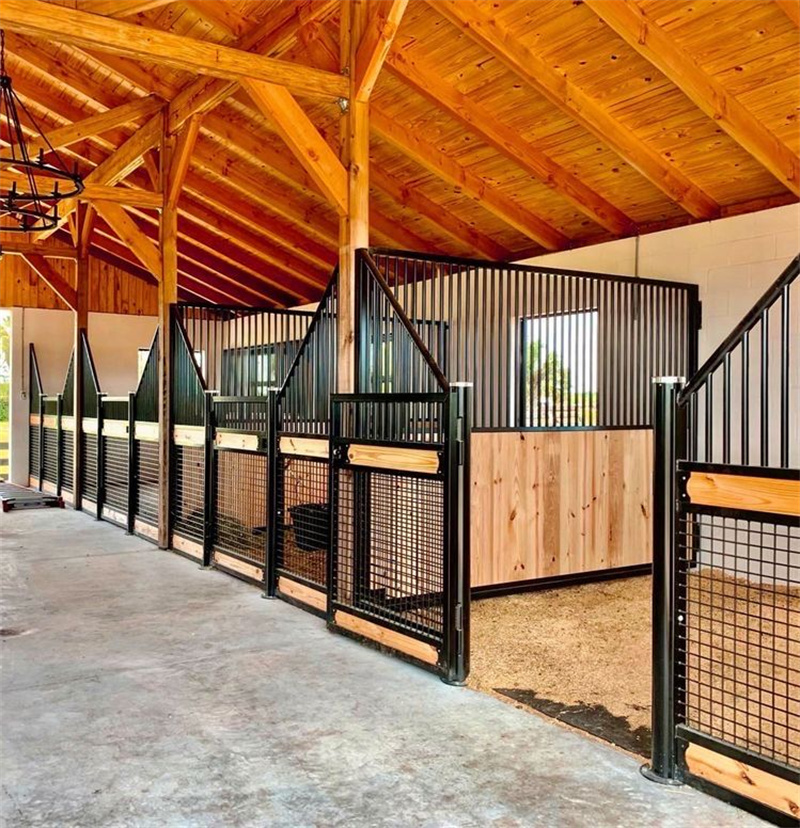
Customizing Your Horse Stable Design: 9 Powerful Features for Optimal Performance
When it comes to horse stables, one size definitely doesn’t fit all. Through my years of experience working with equestrian facilities, I’ve found that thoughtful customization makes the difference between an adequate shelter and an exceptional environment that supports both equine health and operational efficiency. Today’s customizable horse stables options allow you to create spaces perfectly tailored to your specific needs.
Key Design Features: Layout, Ventilation, and Lighting in Horse Stables
The foundation of effective horse stables begins with smart layout planning. The arrangement of stalls, aisleways, and service areas directly impacts daily workflow, horse movement safety, and overall facility efficiency. According to University of Minnesota’s stable management guidelines, the ideal stall size ranges from 10’×10′ for smaller horses to 12’×12′ for larger breeds.
Proper ventilation stands as perhaps the most critical element in stable design. Poor air quality contributes to respiratory issues like heaves and inflammatory airway disease. A well-designed ventilation system provides continuous fresh air exchange while eliminating moisture, ammonia, and airborne particles.
Lighting Considerations for Optimal Horse Health
Strategic lighting in custom horse barns serves both practical and physiological purposes. Natural light through properly positioned windows and skylights reduces electricity costs while supporting horses’ natural circadian rhythms. Supplemental lighting should provide even illumination without harsh shadows or glare that might startle horses.
| Design Feature | Customization Options | Benefits | Considerations |
|---|---|---|---|
| Stall Layout | Center-aisle, shed-row, back-to-back | Workflow efficiency, space utilization | Site constraints, climate, number of horses |
| Ventilation System | Natural, mechanical, hybrid systems | Respiratory health, odor control, moisture management | Climate, seasonal changes, building design |
| Lighting Design | Natural, LED, timer-controlled systems | Health benefits, operational efficiency, safety | Seasonal changes, energy efficiency, initial costs |
| Flooring Materials | Rubber mats, concrete, specialized equine flooring | Comfort, drainage, cleaning ease | Durability, maintenance, investment level |
| Feed/Water Systems | Automatic waterers, built-in feed mangers, hay racks | Labor savings, consistent feeding/watering | Installation requirements, reliability, access for maintenance |
Customization Options for Custom Horse Barns: Doors, Windows, and Finishes
Door selection significantly impacts both functionality and safety in equestrian facilities. Sliding doors have become increasingly popular for their space efficiency and safety advantages over traditional swing doors. Quality hardware is essential, as door failures represent a common safety hazard in many stables.
Window placement and design balance ventilation needs with safety concerns. Mesh-protected windows positioned at appropriate heights allow airflow while preventing injury. Thermally efficient windows with safety glass contribute to climate control while reducing injury risks from broken glass.
“Customization can include adjusting stall dimensions, incorporating specialized feeding systems, enhancing ventilation, and designing flexible layouts to accommodate varying equestrian activities and seasonal changes.”
Interior and Exterior Finish Selections
Interior finishes in customizable horse stables options must balance aesthetics with critical functional requirements like durability, moisture resistance, and ease of cleaning. Kick-proof wall materials and chew-resistant surfaces reduce maintenance costs while extending the facility’s lifespan.
Exterior finish choices impact not just appearance but also weatherproofing, maintenance requirements, and energy efficiency. Modern options include specialized coatings that resist fading, repel insects, and withstand harsh cleaning procedures without deterioration.
Integrating Modern Technology into Horse Stable Design
Today’s custom horse barns can incorporate sophisticated monitoring systems that track environmental conditions including temperature, humidity, and air quality. These systems provide real-time alerts when conditions fall outside optimal ranges, helping prevent health issues before they develop.
Automated feeding and watering systems offer precision timing and portion control while reducing labor costs. According to Ohio State University Extension research, automated systems can reduce daily labor requirements by 30-50% in large facilities while ensuring consistent nutrition and hydration.
Security and Management Technology
Modern security features for horse stables range from basic surveillance cameras to comprehensive systems incorporating motion detection, remote access, and automated alerts. These technologies protect valuable animals and equipment while providing peace of mind, especially for facilities without 24-hour staffing.
Management software integrates with physical stable systems to streamline operations from feeding schedules to veterinary care tracking. These platforms transform data collection into actionable insights, helping optimize everything from inventory management to environmental controls.
When designing your customized stable, prioritize the features that directly address your specific operational needs rather than adding technology for its own sake. Strategic customization focused on your particular situation yields better results than implementing every available option.
Making an Informed Decision: Pros, Cons, and Next Steps for Horse Stables – 7 Key Considerations
After exploring various horse stables options throughout this guide, you’re now equipped with the knowledge to make a well-informed decision. As someone who has worked with equestrian facilities for years, I understand that choosing the right stable solution involves weighing numerous factors including budget, climate, aesthetic preferences, and specific equine needs.
Comparative Analysis of Horse Stable Types
When evaluating different horse stables, it’s essential to consider how each type addresses your specific requirements. Traditional structures offer time-tested reliability and aesthetic appeal, while modern designs incorporate innovative features that can significantly enhance functionality, safety, and horse well-being.
Portable stables for horses provide flexibility that permanent structures cannot match. According to research from University of Minnesota’s Stable Management guidelines, this adaptability is particularly valuable for growing operations or facilities that host seasonal events requiring temporary housing.
| Stable Type | Ideal For | Key Strengths | Limitations |
|---|---|---|---|
| Traditional Wood/Timber | Classic aesthetics, natural insulation | Aesthetic appeal, natural temperature regulation | Higher maintenance, potential pest issues |
| Metal Frame | Durability, lower maintenance | Longevity, fire resistance, easy cleaning | Potential temperature fluctuations, higher initial cost |
| Portable/Modular | Flexibility needs, future expansion plans | Adaptability, relocation possibilities | Potentially less permanent, more assembly/disassembly |
| Hybrid (Multi-material) | Balance of aesthetics and functionality | Combines benefits of different materials | More complex design considerations |
| American-Style Center Aisle | Traditional operations, visitor visibility | Efficient workflow, showcases horses | Space requirements, heating/cooling challenges |
| European-Style Block Design | Commercial operations, biosecurity concerns | Space efficiency, disease control | Less traditional aesthetic, potentially higher cost |
| Specialized Performance Facility | Competition horses, high-value stock | Enhanced features, optimal environment | Significantly higher investment required |
Pros and Cons of Various Horse Stable Materials and Designs
Understanding the advantages and limitations of different materials is crucial when choosing the right horse stable design. Metal structures offer excellent durability and fire resistance but may require additional insulation in extreme climates. Timber provides natural insulation and traditional aesthetics but demands more maintenance over time.
When exploring stable solutions, it’s important to consider the long-term implications of your choice. The initial investment often correlates with durability and reduced maintenance costs over the facility’s lifespan. According to Penn State Extension research, higher-quality materials typically deliver substantial long-term savings despite higher upfront costs.
Material Performance Factors for Stables for Horses
Beyond the basic durability considerations, each material offers distinct advantages for specific circumstances. HDPE (high-density polyethylene) components provide exceptional resistance to chewing and kicking while offering easy cleaning. Galvanized steel delivers outstanding structural integrity in areas with severe weather events.
“Selecting the right horse stable depends on factors like available space, budget, climate, and specific equestrian needs; a consultation with stable design experts can help tailor the best solution.”
The layout design is equally important as material selection. Center-aisle designs facilitate efficient workflow and visitor viewing, while shed rows excel in warmer climates where maximizing airflow is essential. When determining how to choose the right horse stable design, prioritize the functional requirements specific to your operation.
Actionable Steps for Horse Stable Buyers
Now that you understand the options available, it’s time to take concrete steps toward selecting your ideal horse stables. Begin by documenting your specific requirements, including number of horses, available space, budget constraints, and any special needs like foaling stalls or isolation areas.
Create a prioritized list of features that are essential versus those that would be nice to have. This distinction helps make informed compromises when balancing budget with features. Consider consulting with experienced stables for horses designers who can provide insights specific to your situation and location.
Decision Pathway for Selecting Your Ideal Stable
- Assessment: Evaluate your specific needs, site conditions, and budget constraints
- Research: Explore different stable types, materials, and customization options
- Consultation: Speak with stable design experts about tailored solutions
- Site Planning: Consider orientation, drainage, access, and future expansion
- Material Selection: Choose materials that best match your priorities and conditions
- Feature Customization: Identify which specialized features deliver the most value
- Quote Comparison: Obtain and evaluate comprehensive proposals from reputable providers
Remember that the perfect stable balances immediate needs with future possibilities. When implementing how to choose the right horse stable design, consider potential expansion or changing requirements as your equestrian activities evolve. Modular systems or designs that allow for future modifications may provide long-term flexibility worth the initial investment.
For personalized guidance tailored to your specific equestrian needs, consider reaching out to experienced professionals who can help translate your requirements into an optimal stable solution. Your horses deserve a safe, comfortable environment that also meets your operational and aesthetic preferences.

FAQ
-
Q1: What are the benefits of using different materials for horse stables?
A1: Different materials such as timber, metal, and wood offer varied durability, insulation, and maintenance needs, allowing horse owners to choose the best option based on climate, budget, and aesthetic preferences.
-
Q2: How do I determine the best type of horse stable for my property?
A2: Selecting the right horse stable depends on factors like available space, budget, climate, and specific equestrian needs; a consultation with stable design experts can help tailor the best solution.
-
Q3: What are the advantages of metal stables compared to timber stables?
A3: Metal stables typically require lower maintenance, offer enhanced longevity, and are resistant to pests, whereas timber stables provide a traditional look with natural insulation benefits.
-
Q4: Why is proper ventilation crucial in horse stables?
A4: Proper ventilation is essential in horse stables to reduce moisture buildup, prevent respiratory issues, and ensure a healthy environment, thereby improving overall equine well-being.
-
Q5: What design features should be considered when building a horse stable?
A5: Key design features include optimal space layout, natural lighting, sufficient ventilation, ease of cleaning, and flexibility for future customizations according to equestrian needs.
-
Q6: How does stable design influence horse comfort and performance?
A6: A well-designed stable improves horse comfort by ensuring proper airflow and space usage, reduces stress, and supports better performance through safe and thoughtful design choices.
-
Q7: What best practices should be followed for maintaining a horse stable?
A7: Regular cleaning, periodic structural inspections, ensuring proper ventilation, and routine maintenance of feeding and watering systems are essential practices to keep a horse stable in optimal condition.
-
Q8: How can horse stables be customized to meet specific equestrian needs?
A8: Customization can include adjusting stall dimensions, incorporating specialized feeding systems, enhancing ventilation, and designing flexible layouts to accommodate varying equestrian activities and seasonal changes.
External Links
- University of Minnesota: Stable Management Practices
- Iowa State University Extension: Equine Facility Design
- Penn State Extension: Horse Barn Design Guidelines
- Ohio State University Extension: Stable Management
- USDA NIFA: Guidelines for Equine Facilities
- UC Davis: Equine Housing Guidelines
- Kansas State University Extension: Horse Stable Construction
- Harvard Business Review: Trends in Equine Facility Design
SEO Information
Title: Horse Stables: Types, Materials, and Designs Explained
Description: Explore the various types of horse stables, their materials, and design options to make informed decisions for your equine companions’ safety and comfort. Learn from Frank Zhang, founder of DB Stable, about the crucial factors in stable construction.
URL: horse-stables-types-materials-designs
Primary Keyword: Horse Stables
Blog Categories
Horse Care Basics
